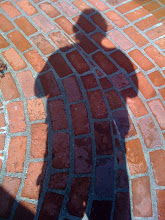


Mow, blow, and go.
That's how my friend Paul Henman described the gardeners he had just hired to maintain his property on Kings Road, above the Sunset Strip. These guys don't pick particular bedding plants for a particular season, or plot out an English garden. Most don't know the difference between an annual and a perennial. They mow the grass, blow the clipping, and go off to the next gig. In fairness to this genre of the gardening trade, they are relatively inexpensive and fast. With respect to the Master Gardeners of Southern California it seems that the majority of he work force are the mow, blow, and go guys.
My favorite was a man I employed between 1984 and 1999. Gonzalo Mayoral billed himself as a landscaping expert trained in Mexico by un jardinero principal. Based on his boasts I would let him, and pay him, to pick plants and layout schemes for my garden areas. Some worked, some didn't. Most didn't. Gonzalo Mayoral was a mow, blow and go guy. He did work for us from the time our daughters, Alexis and Sloane, were babies and well into their teens. So it came as no surprise when as a momentary enterprising teen, Alexis announced that she would take over the mowing. Gonzalo was out. Alexis was in. Alexis went to college. Sloane, whose prowess with blade wielding machinery was an unbearable thought and was less enterprising, totally rejected the idea of mowing. Suddenly I was the mow and blow guy, I had no place to go. This lasted better than five years. Oh, its great exercise. Well not as good as a hike in Griffith Park or getting beat in a rousing match of tennis. It's a bore. An idea flashed.
Under the cloak of enviromentalism, after all the gas fumes and the wasted water were quickly becoming politically incorrect, I decided to eliminate the chore of mowing and blowing. I started with the parkway. A parkway is many things. In my neighborhood it is the strip of grass between the street and the sidewalk. Mine was a strip of over watered, over fertilized, crab grass that needed weekly mowing. The only purpose that I saw it fill was a bail out area for a shaky kid on blades, a skateboard or the first trip down the sidewalk without the training wheels. It was also the first indicator, a realtor told me, of curb appeal. So whatever I did it had to look good.
I began by installing some drought tolerant plants, removing large areas of the crab grass aromund them. In the grass-less perimeters I sowed wild flower seeds. Now there was less grass but I still had to mow and now negotiate my mower between the plants. No good. The people came from the Toluca lake garden club and put in a magnolia tree. They didn't comment but I think they were whispering about my unfinished masterpiece. I started to remove the grass. Every blade every root. Tedious and extremely boring. Neighbors were staring as I sifted soil from the roots. I called Tony the handyman and in three hours he and his sidekick Jose had all the grass removed.
Oddly enough Balboa Brick across from the Van Nuys airfield sells bark chips. I was shocked that it took 26 bags of the stuff to lay in a 3 inch covering. The guy at the yard had suggested that I buy a scoop (the contents of a front loader). I rejected his advice and it cost me twice as much. Now it's a strip of plants, wildflowers that are on the move, all surrounding a youthful Magnolia tree. In the spring and early summer is a mass of tangled wild flowers that look nearly as good as they start to die off as they do when they are in full bloom. In the sumer and winter its a neat brown area that hosts the perennials which are in permanent residence. The maintenance consists of pulling the stray blade of grass, kicking the bark off the sidewalk and picking up the styrofoam cups the busboys from the local greasy spoon leave behind. Mission accomplished. Now the back garden...






